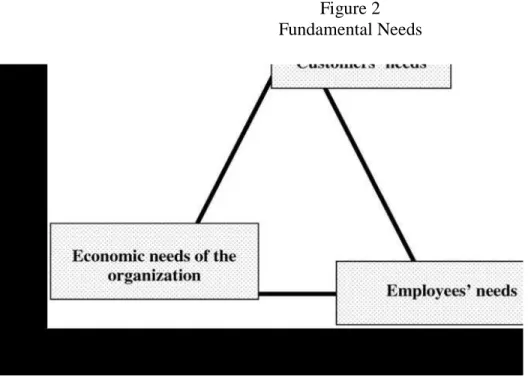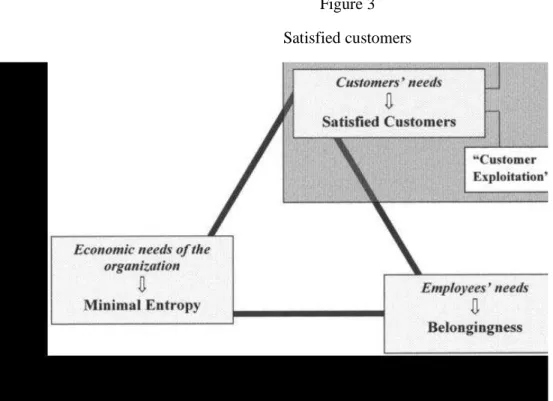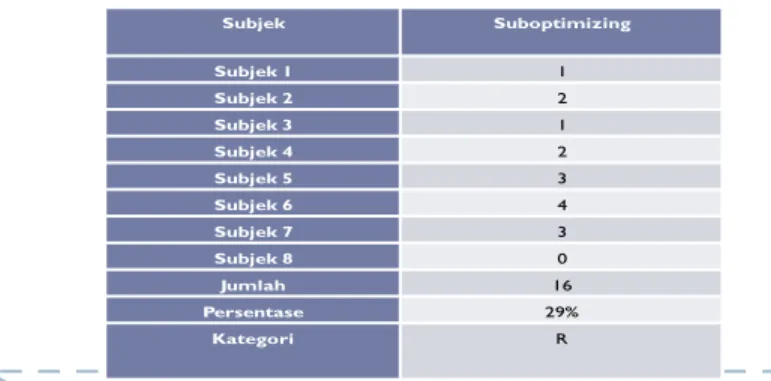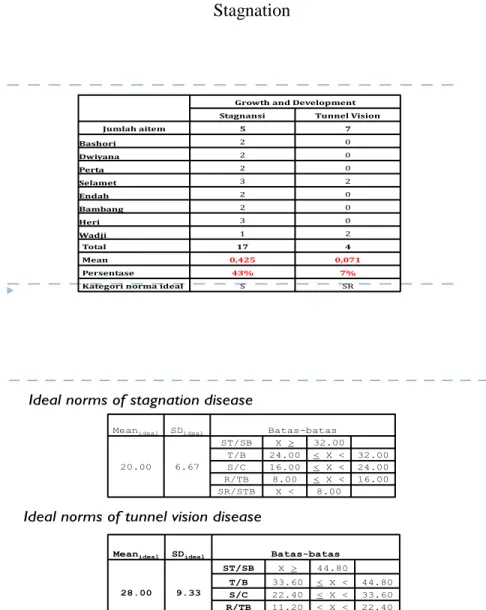Organizational Health
as A Corporate Culture and Foundation of Organizational Development.
L. Verina H. SecapramanaUniversity of Surabaya
verina@staff.ubaya.ac.id
Culture is a field of many interacting forces, as a stream of human activities involving ideas, behaviors, norms, and manifestations of many kinds in which everyone is enmeshed day by day. Cultures involve norms and values, and they usually have quite long durations in time. Sudden change is possible but rare. An organization indeed can embrace joy and health, while overcoming the potentially conflicting experiences of work and joy as a corporate culture. Work need not be a burden, and the attainment of positive pleasure and a sense of daily vitality constitute reachable goals. Building a joyful organization, as worldwide experience shows, is a counterintuitive exercise. But having the experience of joy in the organizational context, organizational health is related to success, as well as being a strong foundation of organizational development.
This concept considers a balance among objectives and examines the numerous ‘‘diseases’’ of organizations. There are some criteria for organizational health and the diseases that arise when some functionality is consistently missing. These include customer exploitation, aggressive approaches to the environment, alienation, shortsightedness, and workaholism. Symptoms include self-centered leadership, isolation, and insensitivity—all of which frustrate organizational health. it builds on a sound theoretic base for understanding human behavior.The executives play a distinguished role in creating a healthy and joyful organization.
The following is a research on the organizational health in an institution , associated with organizational development efforts to meet the era of globalization in general and especially AEC. This is a survey research using observation and interviews as the method, and analyzed by quantitative and qualitative method. Guidelines interview derived from the criteria of diseases in organization. There were 8 participants from 4 sub division.
The results showed the tendency of several diseases such as bureaucracy, suboptimizing , risk avoidance , stagnation , and joylessness . It is concluded that the organization is relatively quite healthy , but there are still some potential diseases that needs to be prevented from spreading. It is suggested that the organization should review the organizational structure , increasing the development and coaching of employees , and giving the product knowledge to the employees. Further research needs to be done for the review of item checklist , use of research methods that are more varied , and the increasing number of participants.
1. Introduction
Culture is a field of many interacting forces, as a stream of human activities involving ideas, behaviors, norms, and manifestations of many kinds in which everyone is enmeshed day by day. Cultures involve norms and values, and they usually have quite long durations in time. Sudden change is possible but rare.
According to Imre Lovey, Manohar S. Nadkarni, and Eszter Erdelyi (2007 ) people create organizations in order to facilitate the achievement of a set of objectives, objectives that can be achieved only by an organization. (If we could meet those objectives ourselves, why build an organization?) Once we have decided to create an organization, the following four fundamental issues need to be considered, consciously or unconsciously:
a. Organizations aim to satisfy the specific needs of a select group of people, with the hope of receiving a reasonable reward for their activities. Customers—whether they pay or not—legitimize the existence of any organization.
b. An organization is always a collection of people, not a collection of objectives. Not just those who establish the organization, but those who join it as well, have their own agendas—existential, social, and psychological—related to what they want to see accomplished within the context of the particular organization. Life for every human being inherently comprises numerous inseparable aspects. Being the member of an organization is only one of these aspects. By every act they engage in, individuals manage these multiple aspects simultaneously, and this requires that they develop purposes of their own. Members have to realize their own objectives in joining an organization, not only the objectives of the organization.
c. Only when certain resources are available can an organization start to operate, and only if the organization uses resources efficiently will it be able to survive over time. The very concept of an organization is to bring order in the pursuit of its goals, to organize itself efficiently.
The analogy of individuals and organizations suggests that organizational health is a holistic condition, the coexistence of numerous aspects of organizational functionality. The nature of organizations implies several dimensions in which functionality should be considered in order to assess the state of organizational health. By this definition, an organization can be considered healthy if the following statements can characterize its functionality:
a. A healthy organization satisfies customer needs by providing great value for the customer and thus earns legitimacy for its existence and the ability to maintain itself as a going concern via the continuous stream of revenues,
b. A healthy organization satisfies the needs of its members by creating an environment where members develop (grow) and believe that they matter and so fulfill their individual objectives while they realize the objectives of the organization,
c. A healthy organization satisfies economic requirements (financial benchmarks such as profitability imposed mainly by markets and regulators) by using resources most efficiently and effectively in its pursuit of objectives,
d. A healthy organization maintains a balance between these three fundamental objectives by developing a structure and a culture that encourage, considering all three
simultaneously when making decisions,
e. A healthy organization grows and develops over time, increasing its reach and/or ability to handle complex situations, and
f. A healthy organization lives in harmony with its natural social and economical environment
We define organizational health as the holistic condition of these six main criteria being satisfied to a high degree concurrently.We can extend our definition of organizational health to include the followingabilities:
a. to cope with events that have a negative impact whether occurring inside and/or outside the organization and
Figure 1
The Model of a Healthy Organization
Source : Imre Lovey and Manohar S. Nadkarni, Eszter Erdelyi, 2007
This means that if the organization can master internal and external resources to solve problems so that not only are they solved for the time being, but also so that they do not deepen or recur, we consider the organization healthy. In a healthy organization, problem-solving mechanisms work automatically, similarly to the immune system in physiology. When the problem-solving mechanisms are absent, weakened, or slow in response, problems occur, persist, or recur, wasting energy and resources in a preoccupation with short-term and partial remedies, not main purposes. We call this phenomenon organizational disease. We define organizational diseases as situations in which :
a. part(s) of the organization do not fulfill their functions according to the requirements, b. some of the organization’s processes persistently fail to meet requirements, and
c. one or more of the fundamental objectives are repeatedly neglected in the decision making process.
b. the location where the effect of malfunction is mainly felt, or c. the structures and systems that tend to perpetuate the problem.
As problems become recurrent, typical behavior manifests in organizations. Symptoms of organizational diseases must appear together to constitute the disease. Diagnosis of organizational health entails a focused collection of data for the purpose of identifying and treating organizational diseases. To treat a disease, after ascertaining the nature of it, one must determine its cause. To be able to state that a cause renders an organizational disease, we should be able to see that whenever the cause happens, the disease happens. We found that causes of organizational diseases have three most typical origins. The first origin we call ‘‘genetic.’’ The second origin is ‘‘birth related.’’ The third origin of diseases is ‘‘environmental.’’ The description of several organizational diseases consisted of the definitions, symptoms, causes, and origins. For every disease it is also identify what other related diseases are likely to occur together with that particular primary disease. After each disease there is a table that summarizes systematically the possible causes by three categories and consequently a series of alternative actions to consider in treating the given disease. This framework, as both a diagnostic tool and a tool kit to improve organizational health, has been instrumental in bringing about positive change in the wide variety of organizations.
An organization indeed can embrace joy and health, while overcoming the potentially conflicting experiences of work and joy as a corporate culture. Work need not be a burden, and the attainment of positive pleasure and a sense of daily vitality constitute reachable goals. Building a joyful organization, as worldwide experience shows, is a counterintuitive exercise. But having the experience of joy in the organizational context, organizational health is related to success, as well as being a strong foundation of organizational development.
2. Literature review
There are three fundamental objectives of the organization. The three fundamental objectives of every organization can be depicted in a triangle. Each corner of the triangle stands for a fundamental objective. Customers have needs, and, having consumed goods or services, they evaluate their level of satisfaction. The market and its regulations in general, owners and shareholders in specific, define the standards of satisfying the economic needs of an organization. The social environment and the employees themselves define their expectations and the level of satisfaction they get from working in the organization. We define the first criterion of organizational health as satisfying the three fundamental objectives in a balanced way over time. No single objective has exclusive priority within an organization’s goal hierarchy; therefore, the three fundamental objectives should be satisfied simultaneously.
Figure 2 Fundamental Needs
If the customers’ needs are fulfilled, there are satisfied customer. If the employees needs are fulfilled,
there are belongingness. If the economic needs of the organization are fulfilled, then the entropy would be
Figure 3
Satisfied customers
The diseases related to satisfied customers are servility and customer exploitation.
Figure 4 Belongingness
The diseases related to employees’ needs are alienation and pampering.
Minimal Entropy
.
The diseases related to economic needs of the organization are money mania and negligence of financial matters.
3. Method
Participants were 8 employees of the divisions of the X organization. Data were collected by using
interview techniques, checklists, and observation. All the data were analyzed quantitatively and
qualitatively.
4. Results and discussion
The results showed tha there are the tendency of several diseases, such as bureaucracy,
suboptimizing, risk avoidance, stagnation, and joylessness. Entropy in the organization is a condition
when the organization is run out of energy used to do the job before the job is completed. This resulted
in the organization's performance to be low prior to achieve these goals. Internally the organization
itself organize their employees in a way that is most efficient namely empowering few employees as
resources to produce optimum output. However, the emergence of entropy can stifle it. Therefore, a
The profitability of the company is an indicator that determines how to meet the needs of the economy.
This profitability measure the efficiency of the operation and the results of the resulting product.
Therefore, entropy can be determined through the profitability of an organization.
Entropy organization can also be reduced with the presence of sufficient information from the
environment. This makes the employees to work efficiently. Through the information the sensing is also
required so that it can adapt well, and then entropy can be reduced.
Table 1
1. Minimizing Entropy Insensitivity to Problem 13 SR
1. Bureuacracy 13 S
1. Living in Harmony Aggressive Approach 5 SR
1. Insufficient Approach 5 SR
1. Joyful Organization Joylessness 16 R
a. The operational division is overemphasizing hierarchy that must be obeyed by employees, where some of their actions must be documented and approved by a very highlevel.
b. It reduces the enthusiasm in work and raises entropy condition.
Some of the bureaucratic symptoms experienced by employees are:
a. Attention is too focused on the process and rules for the approval of the reservation, where approval should only be performed by the director.
b. Process and approval regulation for ordering materials is too long, and some customers had to queue for next month as a result.
c. Employees tend to prefer to follow the old rules, despite knowing the condition of the needs of other divisions.
d. As a result of the prolonged process and rules of material ordering approval, some employees suggest a shortcut to the another division to order their own materials and then the cost will be reimbursed.
Bureaucracy disease experienced by the employees caused by :
a. Regularity and predictability as the tradition will have a higher value than the flexibility and results orientation perceived by the employees.
b. Division tended to monopolize the situation by stressing procedures and policies as the director approval and not to emphasize the results.
Disease bureaucracy experienced by employees stems from:
a. The seniors of this division have more belief in the process, the rules and regulations rather than employee initiative and results orientation perceived by the customer.
c. Organizations require the division to perform administrative and long reporting systems. Theoretically:
a. bureaucratic disease coincided with decision paralysis disease, risk avoidance, insensitivity to problems and organizational paranoia.
b. In addition to disease bureaucracy, decision paralysis, risk avoidance, and insensitivity to problems, there are several other diseases that can cause entropy, ie suboptimizing, longsightedness, shortsightedness, and self centered leadership.
Table 2
Employees work only to support his own team
Table 3
Disease Jumlah AItem F % Norma
Sta gna tion 5 17 43% S
Shortsightedness 6 3 6% SR
Unsufficient Va lue for Customer 7 7 13% SR
Tunnel Vision 7 4 7% SR
Risk Avoida nce 11 22 25% R
Disease yang muncul bersamaan :
Risk avoidance sejalan dengan hasil wawancara disease stagnation,
dimana karyawan terbiasa melakukan rutinitas yang sama/
monoton, sehingga hal tersebut membuat karyawan kurang berani untuk mengambil resiko atau tantangan baru.
Meaning that employees do not enjoy their job, but should be analyzed further about the cause
of the unhappiness. Whether is it caused by organizations that do not support the employees or are
there know other factors involved . In his book Lovey mentions aspects related to joylessness is Self
centered leadership, organization paranoia, Alienation
Conclusion and Recommendation
a. Bureaucracy disease if neglected might become an acute problem, causing lower employees performance, and decreasing the organizational achievement Organization should review its organizational structure, caring about the development of potential employees and coaching them, and given an understanding of product knowledge. b. Middle manager or supervisor is needed as mediator of employees and top
management.
c. Motivational training for employees so they get the motivation to develop their potential, not just go through the routine in accordance with procedures and regulations.
d. Management training for the management to enrich the management methods that can be applied in accordance with the global conditions of employees.
e. Review the system and the procedures, so that the procedure can be more flexible, but still can be justified.
f. Further research should review the checklist item and adjust it with the actual condition of the organization so that the diseases can be measured more precisely g. Further research can also try to vary the data collection methods, such as the FGD,
and increasing the number of participants.
References
Cascio, Wayne F. 2013. Managing Human Resources : Productivity, Quality of Work Life, Profits. 9th ed. New York : McGraw-Hill, Irwin
Lovey, I., & Nadkarni, M.S. (2007). How healthy is your organization? Westport: Praeger Publishers
Mondy, R. Wayne, Robert M. Noe & Shane R. Premeaux. 2002. Human Resource Management. 8th. Ed. New Jersey : Pearson Education Inc.





